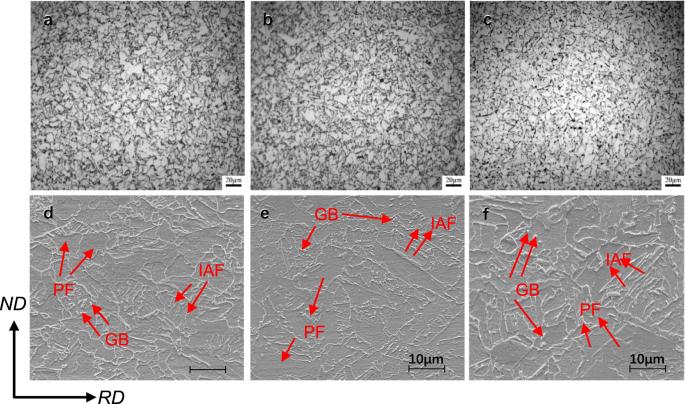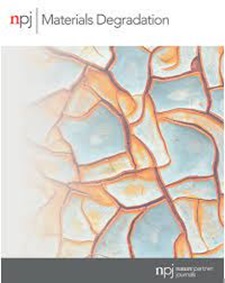Improving HIC resistance of pipe-steel by Ti/Mg treatment with insights into hydrogen migration
IF 6.6
2区 材料科学
Q1 MATERIALS SCIENCE, MULTIDISCIPLINARY
引用次数: 0
Abstract
The presence of inclusions in steels is responsible for hydrogen-induced cracking (HIC), which necessitates control over their size and distribution. The aims of this study are to investigate the effects of different inclusion-modifying elements on steels, as well as reveal the impact of inclusions on hydrogen migration. Various methods, including HIC evaluation, electrochemical hydrogen permeation, silver microprint, and in-situ hydrogen escape observation, are utilized. The results indicate that steel with a Ti/Mg content ratio of 4:1 exhibits favorable comprehensive resistance against HIC. Moreover, the observation of in-situ hydrogen escape observations reveals that steels with a higher number of hydrogen bubbles and a higher ratio of bubbles related to the inclusions demonstrate better HIC resistance. The refined, dispersed, and multi-compounded inclusions facilitate the formation of more complex trapping sites, ultimately improving the dispersion and pinning of dissociative hydrogen atoms. Consequently, employing a multicomponent inclusion modification strategy holds promise for the development of hydrogen-resistant pipeline steel.

通过钛/镁处理提高钢管的抗 HIC 性能,深入了解氢迁移问题
钢中夹杂物的存在是氢致开裂(HIC)的原因,因此必须控制夹杂物的大小和分布。本研究的目的是调查不同夹杂物改性元素对钢材的影响,并揭示夹杂物对氢迁移的影响。研究采用了多种方法,包括 HIC 评估、电化学氢渗透、银微印迹和原位氢逸观察。结果表明,Ti/Mg 含量比为 4:1 的钢具有良好的抗 HIC 综合能力。此外,原位氢逃逸观测结果表明,氢气泡数量越多、与夹杂物相关的气泡比例越高的钢材,其抗 HIC 性能越好。细化、分散和多复合夹杂物有助于形成更复杂的捕获点,最终改善离解氢原子的分散和钉扎。因此,采用多组分夹杂物改性策略有望开发出抗氢管道钢。
本文章由计算机程序翻译,如有差异,请以英文原文为准。
求助全文
约1分钟内获得全文
求助全文
来源期刊

npj Materials Degradation
MATERIALS SCIENCE, MULTIDISCIPLINARY-
CiteScore
7.80
自引率
7.80%
发文量
86
审稿时长
6 weeks
期刊介绍:
npj Materials Degradation considers basic and applied research that explores all aspects of the degradation of metallic and non-metallic materials. The journal broadly defines ‘materials degradation’ as a reduction in the ability of a material to perform its task in-service as a result of environmental exposure.
The journal covers a broad range of topics including but not limited to:
-Degradation of metals, glasses, minerals, polymers, ceramics, cements and composites in natural and engineered environments, as a result of various stimuli
-Computational and experimental studies of degradation mechanisms and kinetics
-Characterization of degradation by traditional and emerging techniques
-New approaches and technologies for enhancing resistance to degradation
-Inspection and monitoring techniques for materials in-service, such as sensing technologies
 求助内容:
求助内容: 应助结果提醒方式:
应助结果提醒方式:


